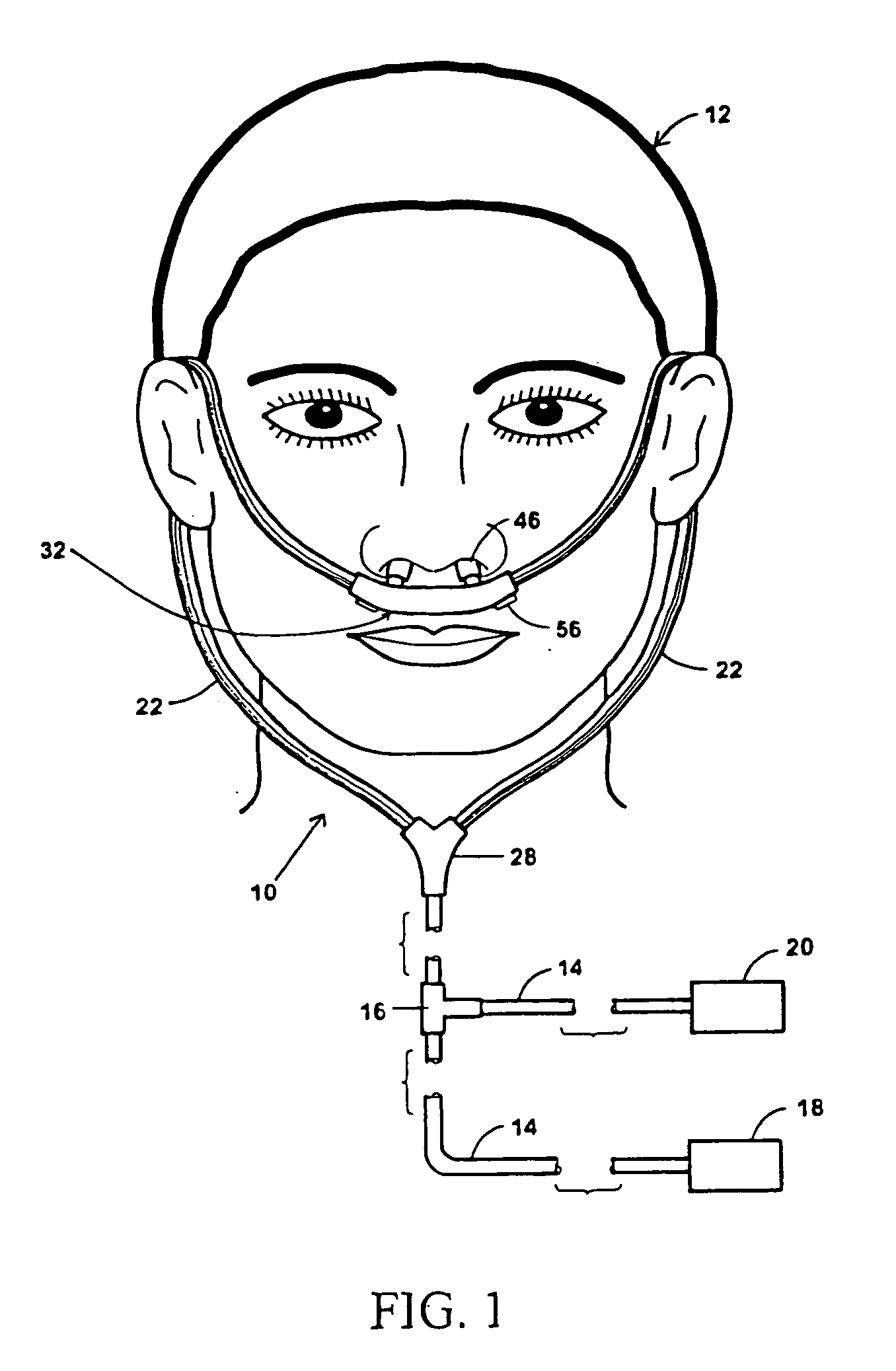Nasal ventilation interface
a nasal tube and interface technology, applied in the field of nasal tube systems, can solve the problems of inability to ensure ventilation in many patients, inability to provide positive seal between the nasal insert tube and the nostrils, masks and headgear tend to be rather constraining and uncomfortable, etc., to achieve minimal or no leakage of gas from the nostrils, improve patient comfort, and increase gas delivery efficiency
- Summary
- Abstract
- Description
- Claims
- Application Information
AI Technical Summary
Benefits of technology
Problems solved by technology
Method used
Image
Examples
Embodiment Construction
[0042] Referring now to FIG. 1, there is illustrated a first embodiment 10 of the present nasal interface invention as typically worn by a patient 12. The interface 10 may be connected by feed tubing 14 and a feed valve 16 to a mechanical ventilator 18 and a gas supply 20. The feed tubing 14 may be a thin flexible tube made of an inert material such as polyurethane, silicone, or another material known in the art. It will be noted that all components of the interface 10 may be made of medical grade biocompatible materials.
[0043] The mechanical ventilator 18 forces a gas such as air through the tubing 14. The mechanical ventilator 18 may be provided by a continuous positive airway pressure (CPAP) machine for constant air pressure delivered through the interface 10 to the patient 12. Alternatively, the mechanical ventilator 18 may be provided by a bilateral positive airway pressure (BIPAP) machine for intermittent air pressure delivered through the interface 10 to the patient 12, wher...
PUM
 Login to View More
Login to View More Abstract
Description
Claims
Application Information
 Login to View More
Login to View More - R&D
- Intellectual Property
- Life Sciences
- Materials
- Tech Scout
- Unparalleled Data Quality
- Higher Quality Content
- 60% Fewer Hallucinations
Browse by: Latest US Patents, China's latest patents, Technical Efficacy Thesaurus, Application Domain, Technology Topic, Popular Technical Reports.
© 2025 PatSnap. All rights reserved.Legal|Privacy policy|Modern Slavery Act Transparency Statement|Sitemap|About US| Contact US: help@patsnap.com



